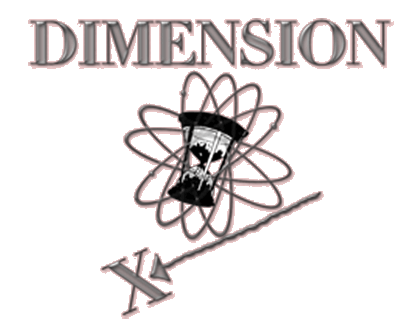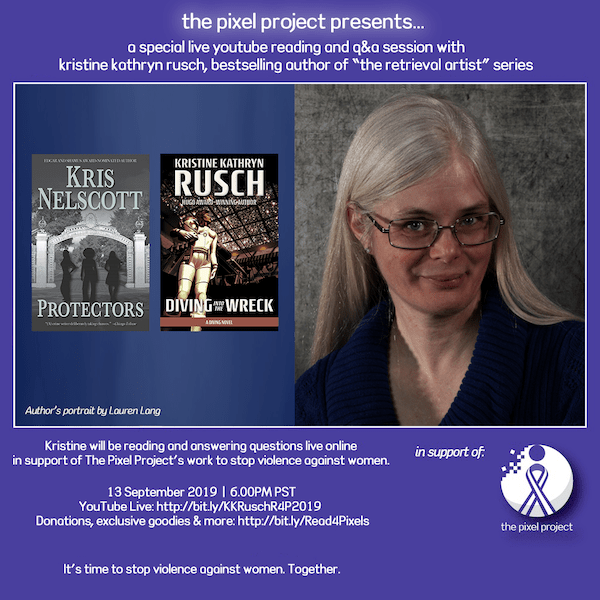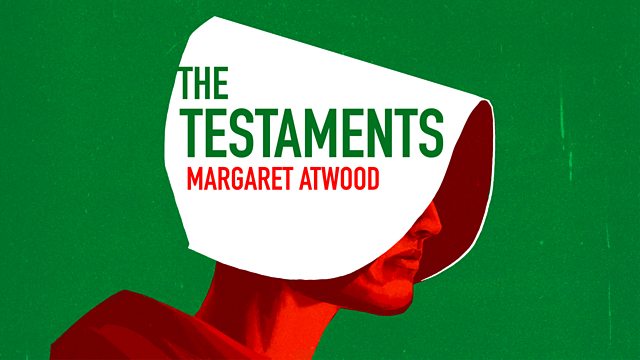(1) DOES THE GENRE HAVE A CORE? Charles Payseur, whose reviews of short sff fiction now appear in a column for Locus, questions what is the “core” of the genre in the context of noting that he doesn’t cover Clarkesworld, Asimov’s or Analog. “Quick Sips 06/24/2022”.
…I do always encourage people to just find venues that you like and then otherwise read what you feel like. The field of short SFF is too big to take on comprehensively, and even trying can quickly lead to burnout and frustration (just ask…most short SFF reviewers who try). As a reviewer and now as an editor, though, does there arise some sort of obligation to try? It’s a decent question, and one that I’m not sure anyone can answer because…what would trying look like, if not doing exactly what I’m doing now? Could I fit Clarkesworld into my reading? I’m actually unsure. Probably if I could I would have. It’s not like I have suddenly opened up a bunch of free time in my life. And yet I feel that some would think this omission a failing, as some have found my lack of coverage of Asimov’s and Analog a failing. And…I don’t have much to offer to that. All of those are very large publications and take a big commitment to get through every month. Were they smaller I’d probably be more tempted. As is…
There are some arguments one could make about how to determine where the “core” should be. By what pays best, maybe? Or by what has a long tradition of award nominations. By the prestige of the editor. However the lines of the “core” are drawn, though, many will feel excluded for being on the outside of it. It’s a problem that really can only be overcome by engagement. If more people were engaged in drawing their personal cores, then what gets engaged with critically might greatly expand. If reviewers all are moved not by proximity to some sort of “required reading” but rather are pulled in the direction of their personal taste, then as long as the field of reviewers were diverse and acting in good faith, then the largest possible coverage would be achieved….
(2) ON THE LEFT COAST. SFF author Brenda Clough, whose family moved from Virginia two years ago, tells a Washington Post interviewer “What I love about my home in Portland, Ore.”
Brenda W. Clough and her husband moved from Reston, Va., to Portland, Ore., early in 2020. Brenda, a novelist, shared their experience and what they love about their new home in an email. The following was edited for length and clarity.
“My husband and I sold our big house in Reston, Va., when we retired in early 2020. What good timing we had, because both of our offices closed down later that year. We moved to his hometown, Portland, Ore., where we bought a condo downtown.
… I also wanted modern architecture. The D.C. suburbs are almost purely Colonial in style, a Mid-Atlantic thing. Now I have become a fan of poured concrete and Brutalism. My current home has plate-glass windows that go from floor to ceiling. There are no steps at all. I can’t hear my neighbors, and I don’t have screens on the windows. There aren’t many bugs downtown.
Because I am a novelist, I also needed a place that could accommodate our 10 tall bookcases full of books. I dragged the ones in the picture all the way from the East Coast to the West, the tools of my trade: a science fiction and fantasy collection that spans 70 years and historical volumes focusing on Antarctica or Victorian England. And these are only the survivors of a major cull. I weeded out half of the books and gave them to Reston’s Used Book Shop in Lake Anne, which has been enabling my book shopping for decades. It costs roughly a dollar a pound to move stuff coast to coast, a price that powerfully focuses the mind. Moving like this is the opportunity to prune all the possessions back. It has been liberating to get rid of stuff from the basement, garage and attic….
(3) EATING THE FANTASTIC. Scott Edelman invites listeners to grab dinner with Gwendolyn Clare during Episode 174 of the Eating the Fantastic podcast.

Gwendolyn Clare’s debut novel, Ink, Iron, and Glass, and its sequel, Mist, Metal, and Ash, compose a duology published in 2018 and 2019 about a young mad scientist with the ability to write new worlds into existence. Coming up in November is In the City of Time, the first book in a duology about three science prodigies on a time-traveling adventure to save the Earth. Her short stories have appeared in Clarkesworld, Asimov’s, Analog, and Beneath Ceaseless Skies, among others, and her poetry has been nominated for the Rhysling Award.
Her short story “Tasting Notes on the Varietals of the Southern Coast” was reprinted in The Best American Science Fiction and Fantasy 2018. She holds a BA in Ecology, a BS in Geophysics, and a PhD in Mycology — the last of those making me wish I got around to asking her to assuage my fears about a relative of mine who picks and eats wild mushrooms … but hey, that will have to be dealt with at a future meal during a different con.
We discussed the important lesson COVID taught her about her career, whether her most famous short story reads differently during these pandemic times, the identity of the science fiction writer I was startled to learn had been her high school geometry teacher, what the novels of Elizabeth Bear taught her about writing, the short story concept she decided to instead turn into what became her first published novel, how she gets into the mindset to write in the Young Adult genre, the amazing cleanliness of her first drafts, the pantsing fingerprints she sees on Stephen King, the many iterations recent writers have made to John W. Campbell’s “Who Goes There?,” and much more.
(4) WJW AND THE THREE R’S. The Speculative Literature Foundation’s Portolan Project conducted “An Interview with Walter Jon Williams” about the three R’s of writing craft: Raising the stakes, Reveals, and Reversals.
“Reveals keep the narrative from plodding directly from one point to another, and often sends it off in another direction entirely. This comes from theater in which there’s a curtain, you don’t know what’s behind the curtain. Action goes on, the curtain is pulled back and suddenly you’re in another place that is very different from where you were before.”
Watch or read our interview with Walter Jon Williams on the three R’s of writing craft and how they could make our stories more engaging.
Incidentally, the Portolan Writing Project: Phase 1 recently completed a successful Kickstarter that raised over $5,000. The initiative seeks “to provide a wealth of exceptional creative writing courses and resources, free to the public.”
(5) BETWEEN WORLDS. Barbara Graham searches for the dividing line in “Paranormal Or Normal?” at Mystery Fanfare.
My debut mystery, What Jonah Knew, has been described many different ways: Magical. Mystical. Paranormal. Supernatural. And though in one way the labels fit, in another way they raise questions about where the otherworldly stops and reality begins.
Some background. I was working as a journalist when I was assigned to write a magazine article on past-life regression therapy. As part of my research, I scheduled an appointment with a well-known Jungian analyst who specialized in this work and had published books on the subject. To be honest, I didn’t expect anything to happen. I knew these sessions involved hypnotic suggestion and I—an admitted control freak—believed myself to be immune to trance-induced states. What’s more, the whole business struck me as unreliable at best, fraudulent at worst. Nearly everyone I’d read about who claimed to recall a past life under hypnosis seemed to remember being someone famous—Napoleon, Nefertiti, Abraham Lincoln—never your average serf or working stiff….
(6) VOGEL VOTING DEADLINE APPROACHES. Members of the Science Fiction and Fantasy Association of New Zealand (SFFANZ) have until June 30 to get in their 2022 Sir Julius Vogel Awards votes.
The main SFFANZ site (separate to this news service) was down for a bit – that has been fixed.
You need to be a member to vote (it only costs $10) – see “How to Join SFFANZ”. Here’s the info about how to vote and where to download the voting form. If you need more info about the nominees, there is a voting pack available.
(7) PRIDE Q&A’S. The Horror Writers Association blog continues their “Point of Pride” theme in these interviews with Cody Sisco and Steve Berman.
Do you make a conscious effort to include LGBTQ material in your writing and if so, what do you want to portray?
Being part of a marginalized group creates a hyperawareness of how members are represented in the media, including in fiction. To paraphrase an apocryphal quote: First they ignore you, then they scorn you, then they laugh at you, etc. When LGBTQ writers tell stories, there can be pressure to create “good representation” and to avoid portrayals that are complicated or nuanced especially if they touch on stereotypes. Writing horror is doubly tricky because we have to navigate creating characters and plots based on real fears and injustices, which can blur into inflicting pain on readers and calling up their trauma.
In my writing, I aim to include shades of dark and light, to explore the complications, inconsistencies, and dilemmas that shape every character, and to reach a queer audience with stories that expand the boundaries of queer pop culture.
How do you feel the LGBTQ community has been represented thus far in the genre and what hopes do you have for representation in the genre going forward?
I must admit I am fascinated with essays utilizing queer theory to explore works of horror that most readers would consider “very straight” classic works of horror. A number of academics have applied this to Robert Louis Stevenson’s Jekyll and Hyde as well as Stoker’s Dracula. I feel that such examinations are perfectly valid as I bring my own perspective (a very gay one) to everything I read or watch or hear.
While the number of queer-themed contemporary horror fiction has grown over the years so it is very possible to fill several bookshelves with just new releases, I do wish more LGBTQ readers would familiarize themselves with older works—I’m frustrated with tweets and posts that present and celebrate queer horror as a twenty-first-century phenomenon, ignoring the great efforts of of many authors. Before there was Clive Barker and Poppy Z. Brite, horror fans could delve into the Gothic storytelling of Francis Lathom or Forrest Reid, the Southern macabre of Michael McDowell, or the vampires of Jewelle Gomez and Jeffrey McMahan. To deny their existence is wrong.
(8) BANNED SOMEWHERE BESIDES IN BOSTON. Slashfilm can tell you “Why These Sci-Fi Movies Are Banned Around The World”.
Since the dissolution of the Motion Picture Production Code, also known as the Hays Code, in the late 1960s, film censorship has been relatively uncommon in the United States. However, several other countries still actively ban films. Though science fiction is less of a target than other genres, there are still many notable examples of sci-fi films that ran afoul of censors, and behind each case lies a deeper story. Ironically, these bans end up revealing more about the perpetrators and their politics than any sci-fi film ever could.
First on the list:
The Matrix: Reloaded
“The Matrix” sparked backlash when it was first released in Egypt. As the Israeli newspaper Haaretz reports, several Islamic publications interpreted the film as supporting Zionism. Naturally, Egypt promptly banned its follow-up, “The Matrix: Reloaded,” as well, but the reasoning behind that decision is somewhat murkier.
According to Variety, the country’s Department of Monitoring Artistic Products partially attributed the ban to “scenes of excessive violence,” which is a common red flag in Middle Eastern countries. However, the larger reason requires more digging. The committee also noted that the film “deals explicitly with issues of creation and existence,” including “the Creator and the created, the origins of creation, [and] free will and predestination.”
(9) MEDIA BIRTHDAY.
1950 – [By Cat Eldridge.] Seventy-two years ago on this day, the radio version of Robert Heinlein’s Destination Moon aired on the Dimension X radio show. It was episode twelve of the series.
Despite common belief that it based off the film version of Heinlein’s novel, it was not. It was instead based on Heinlein’s final draft of the film’s shooting script. During the broadcast on June 24, 1950, the program was interrupted by a news bulletin announcing that North Korea had declared war on South Korea, marking the beginning of the Korean War.
A shortened version of this Destination Moon radio program was adapted by Charles Palmer and was released by Capitol Records for children.
You can hear it here.

(10) TODAY’S BIRTHDAYS.
[Compiled by Cat Eldridge.]
- Born June 24, 1842 — Ambrose Bierce. The Devil’s Dictionary is certainly worth reading but it’s not genre. For his best genre work, I’d say it’s “An Occurrence at Owl Creek Bridge” which along with his “The Tail of the Sphinx” gives you range of his talents. Both iBooks and Kindle offer up everything (as near as I can tell) he’s written, much of it free. (Died circa 1914.)
- Born June 24, 1925 — Fred Hoyle. Astronomer of course, but also author of a number of SF works including October the First Is Too Late which I think is among the best genre novels done. I’m also fond of Ossian’s Ride which keeps its SF elements hidden until late in the story. Though he won no genre Awards, he won a lot of other Awards, to wit the Mayhew Prize, Smith’s Prize, FRS, Kalinga Prize, RAS Gold Medal, Bruce Medal, Royal Medal, Klumpke-Roberts Award and Crafoord Prize. (Died 2001.)
- Born June 24, 1937 — Charles N. Brown. Founder and editor of Locus. I’m going to stop here and turn this over to those of you who knew him far better than I did as my only connection to him is as a reader of Locus for some decades now. Locus won far too many Hugos to list under his time there. He also was nominated at Conspiracy ‘87 for a Hugo for his Science Fiction in Print: 1985 that was co-written by William G. Contento. (Died 2009.)
- Born June 24, 1947 — Peter Weller, 75. Robocop, obviously, which was nominated for a Hugo at Nolacon II, with my favorite scene being him pulling out and smashing Cain’s brain in the second film, but let’s see what else he’s done. Well, there’s The Adventures of Buckaroo Banzai Across the 8th Dimension, a film I adore. And then there’s Leviathan which I’m guessing a lot of you never heard of. Or I hope you haven’t. Well, Screamers based on Philip K. Dick’s short story “Second Variety”. And Star Trek Into Darkness certainly qualifies. Hey he even showed up in Star Trek: Enterprise!
- Born June 24, 1950 — Nancy Allen, 72. Officer Anne Lewis in the Robocop franchise. (I like all three films for various reasons.) Her first genre role was not in Carrie as Chris Hargensen, but in a best forgotten a film year earlier (Forced Entry) as an unnamed hitchhiker. She shows up in fan favorite The Philadelphia Experiment as Allison Hayes and I see her in Poltergeist III as Patricia Wilson-Gardner (seriously — a third film in this franchise? Oh why?). She’s in the direct to video Children of the Corn 666: Isaac’s Return as Rachel Colby. And she was in an Outer Limits episode, “Valerie 23”, as Rachel Rose.
- Born June 24, 1950 — Mercedes Lackey, 72. There’s a line on a wiki page that says she writes nearly six books a year. Very, very impressive. She’s certainly got a lot of really good series out there including the vast number that are set in the Valdemar universe. I like her Bedlam’s Bard series better. She wrote the first few in this series with Ellen Guon and the latter in the series with Rosemary Edghill. The SERRAted Edge series, Elves with race cars, is quite fun too. Larry Dixon, her husband, and Mark Shepherd were co-writers of these.
- Born June 24, 1982 — Lotte Verbeek, 40. You most likely know her as Ana Jarvis, the wife of Edwin Jarvis, who befriends Carter on Agent Carter. She’s got an interesting genre history including Geillis Duncan on the Outlander series, Helena in The Last Witch Hunter, Aisha in the dystopian political thriller Division 19 film and a deliberately undefined role in the cross-world Counterpart series.
- Born June 24, 1988 — Kasey Lansdale, 34. Daughter of Joe Lansdale. Publicist at Tachyon Books and a really nice person. Really she is. And yes, she’s one of us having written The Cases of Dana Roberts series, and edited two anthologies, Fresh Blood & Old Bones and Impossible Monsters. In her father’s Hap and Leonard collection Of Mice and Minestrone, she has “Good Eats: The Recipes of Hap and Leonard”.
- Born June 24, 1994 — Nicole Muñoz, 28. You’ll perhaps best remember her for role as Christie Tarr (née McCawley) in the Defiance series. Her first role was playing a Little Girl in Fantastic Four. Likewise she was A Kid with Braces in The Last Mimzy, and yes, Another Girl, in Hardwired. The latter was written by Michael Hurst, and has apparently nothing to with the Walter Jon Williams novel of the same name.
(11) COMICS SECTION.
- The Far Side suggests superheroes are not immune to the problems of aging.
(12) YOU ASKED FOR IT. “Amazon Promises Another Attempt to Make Comixology Suck Less” as Gizmodo puts it so delicately. Their article is based on a Comixology thread that starts here.
Daniel P. Dern sent the link with a note: “Among other things, as in, (says DPD, based on other comments I’ve seen in past months along with some of my own experience) to un-‘deprove’ recent changes which made by Amazon.
“To be fair (still DPD opining), IMHO, both Marvel and DC have made similar ‘deprovements’ to their streaming digital comic services over the past year. They’re still great deals, money for reading wise, but the UI/UX has gotten unnecessarily more ornery.”
(13) MIRACLEMAN SERIES RETURNS. After thirty years, Neil Gaiman and Mark Buckingham complete their Miracleman saga this October in Miracleman By Gaiman & Buckingham: The Silver Age.
“We’re back! And after thirty years away it is both thrilling and terrifying,” Buckingham said. “Neil and I have had these stories in our heads since 1989 so it is amazing to finally be on the verge of sharing them with our readers.”
The two visionary comic talents will complete their unfinished Miracleman storyline “The Silver Age,” including remastered editions of the first two published issues, complete with new artwork and bonus material. The series will follow the previously announced Miracleman By Gaiman & Buckingham Book 1: The Golden Age TPB, the new collection containing Gaiman and Buckingham’s first Miracleman series. After 30 years, fans will finally see the full incredible story of Young Miracleman with more to come!
Young Miracleman — the lost member of the Miracleman Family — is back! His last memories were of a 1963 world of joy and innocence. Now, he’s been thrust into the 21st century, where his best friends have become gods and monsters. Where can a hero from a simpler time call home in this brave new world?

(14) CAN CONFIRM. George R.R. Martin responds to reports about “SNOW… and Other Stuff” at Not A Blog.
…Yes, there is a Jon Snow show in development. The HOLLYWOOD REPORTER story was largely correct. And I would expect no less from James Hibberd. I have dealt with a lot of reporters over the past few years, and Hibberd is one of the very best, an actual journalist who does all the things journalists are supposed to do (getting the facts right, talking to sources, respecting requests for “background only” and “off the record,” etc) that most of the clickbait sites never bother with….
But, yes, it is true. This was not an official announcement from HBO, so it seems there was another leak. I did a long interview with James Hibberd last week, for the big HOUSE OF THE DRAGON story that HOLLYWOOD REPORTER is planning. At the end of the call, he asked a few questions about the spinoffs. “Is it possible one of the spinoffs is a sequel rather than a prequel?” he asked. I answered “No comment.” Then he asked “Is it possible a member of the original cast is attached?” And again I answered “No comment.” And that was all. But plainly he found someone more forthcoming than me. Who? I don’t know, and suspect I never will. A good journalist protects his sources.
There’s not much more I can tell you, not until HBO gives me a green light….
(15) HYSTERICAL LITTER. [Item by Martin Morse Wooster.] Authorities in Malmo, Sweden created a “sexy trashcan” that mutters suggestive comments whenever anyone throws in some trash.“’Sexy’ rubbish bins installed in Swedish town to encourage use”.
Two rubbish bins on Davidshallsbron bridge in Sweden’s southern city of Malmö have been equipped by city authorities with loudspeakers, blaring out sexual phrases like “ooooh, right there yeah” when the lid is opened to encourage passers-by to use the bins to get rid of their rubbish.
(16) VIDEO OF THE DAY. [Item by Martin Morse Wooster.] In “Honest Game Trailers: Dead By Daylight,” Fandom Games says this multi-player vampire slaughterfest “makes you a little more misanthropic just playing it.” The narrator suggests that after fighting various licensed monsters, the next series should feature Jared Leto. “No. not Morbius, Jared Leto. That would be truly terrifying!
[Thanks to Michael Toman, Cat Eldridge, Mike Kennedy, Daniel Dern, Michael J. Walsh, Scott Edelman, Martin Morse Wooster, JJ, John King Tarpinian, Chris Barkley, and Andrew Porter for some of these stories. Title credit belongs to File 770 contributing editor of the day Contrarius.]







